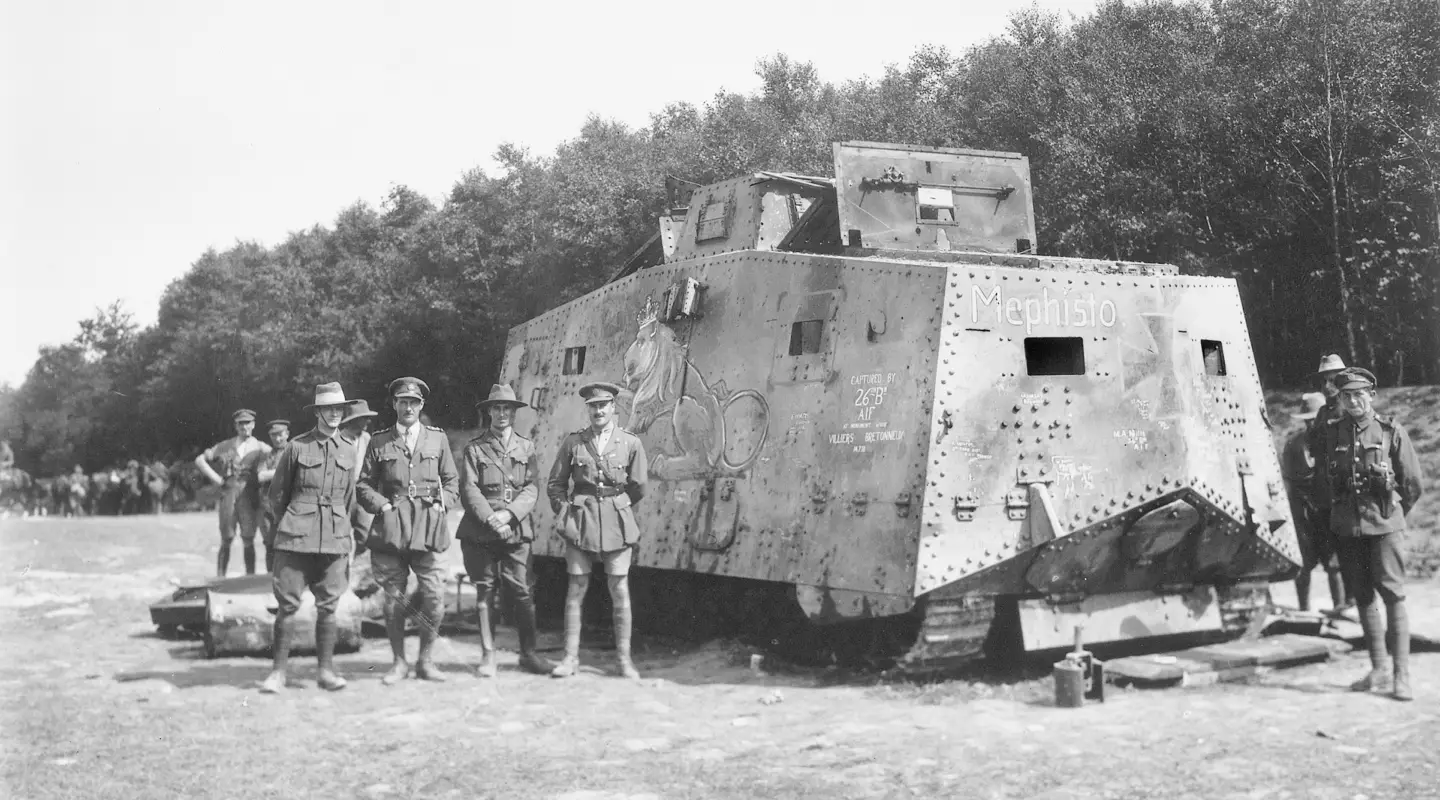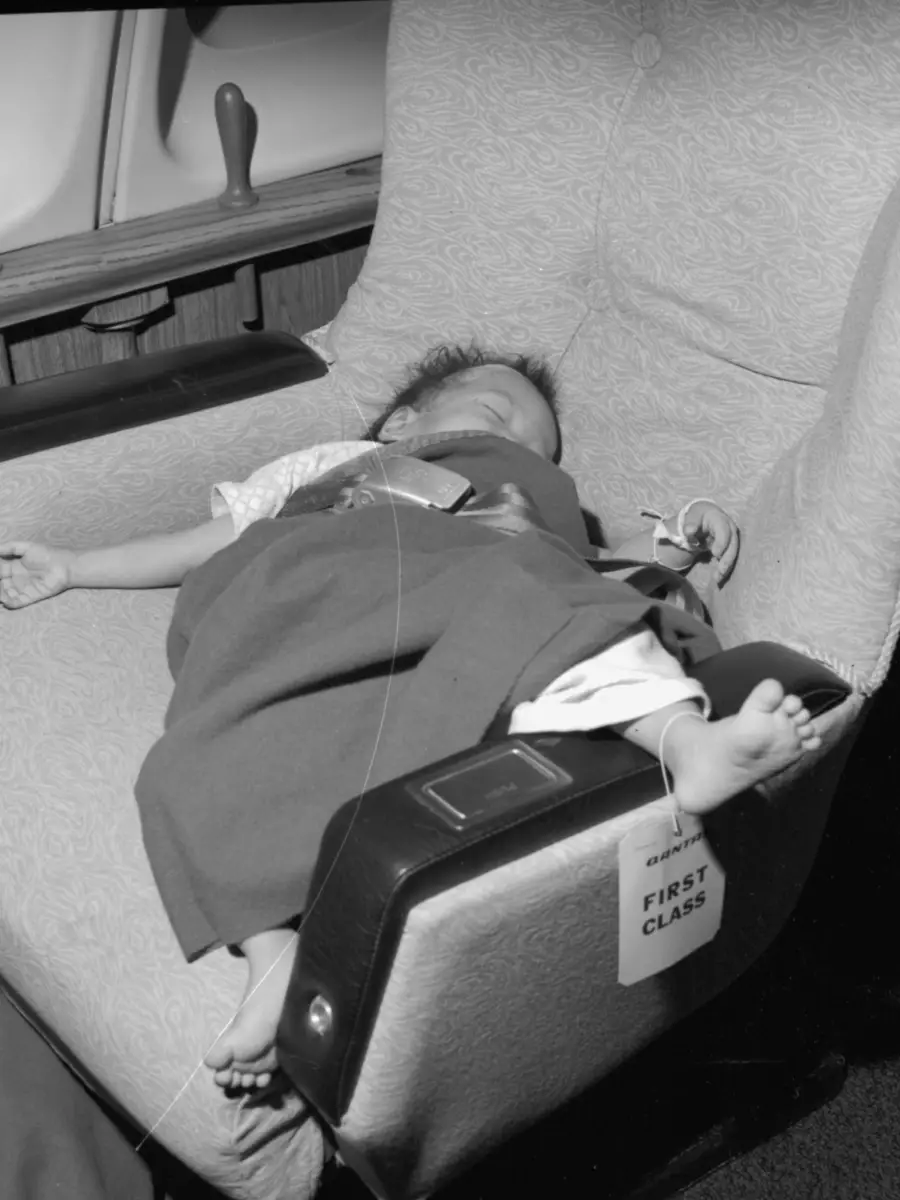Mephisto was not the first tank to cause a stir on arrival in Australia.
The Australian public, avidly reading the newspapers for news of the war, had heard about tanks, the great new invention, since 1916. Two years later, wooden mock-up tanks were sent around Australia to raise money for the war effort. These fake tanks drew large crowds, curious to get an idea of the size of the tanks and to demonstrate their patriotism by subscribing to the latest War Loan.
Grit on Display
So when it was reported, in 1918, that a tank had been saved by the Imperial Government to be presented as a gift to the Australian people, the public were intrigued. The first tank sent never reached Australia because the vessel it was being carried in was torpedoed and sunk. Arrangements were being made to request another tank when a second arrived somewhat unexpectedly in mid-July 1918. Its arrival at the port of Melbourne caused a flurry to arrange a berth alongside the largest crane in the port, so that the 35-tonne machine could be unloaded from the steamer.
Once unloaded, the Mk IV tank was covered with a tarpaulin and drawn by horsepower along Flinders Street to the Ordnance Yard. The procession attracted a great deal of attention, but the public were strictly forbidden to photograph it. The guard accompanying the tank confiscated at least two cameras and broke a glass-plate negative from a third. The tank was so heavy that it took twenty horses and six men skilled in cartage to get the tank by lorry (a kind of tramway flatbed) to the entry of the Ordnance Yard, where a slight rise proved almost impassable. After it tipped backwards, the rest of the morning was spent in jacking up the rear wheels to get the lorry righted and the tank into the yard.
The tank was finally shown to the public in a parade through the streets of Melbourne on 30 July 1918, sensibly driven under its own power this time, rather than drawn by horse. One of the spectators at the parade was Robert Duncan of Adelaide, who decided to try to get the tank to Adelaide. After approaching the board managing the tank’s schedule, he was told it would be possible to take it and its crew (originally supplied by the British Tank Corps but later comprising returned Anzacs) to Adelaide if he raised £1,000. This he did, and the tank was sent to Adelaide by rail.
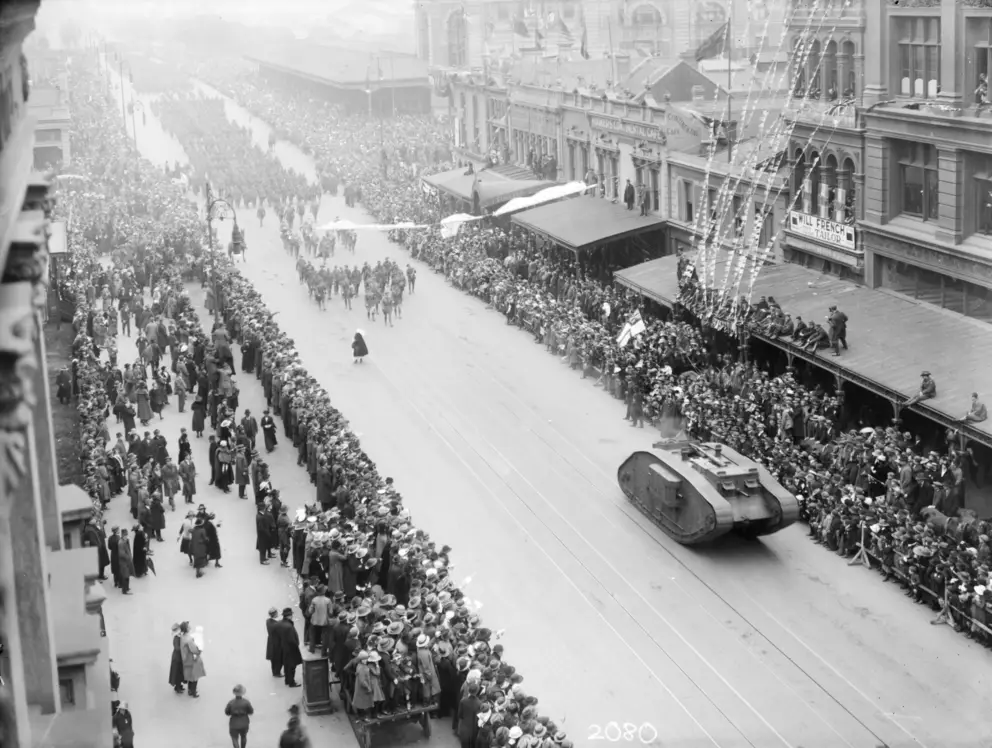
A Mk IV Female tank and AIF men march through city, Swanston Street, Melbourne.
Adelaide newspapers excitedly reported, “As a bald outstanding fact let it be stated that there is a tank in Adelaide – not an ordinary tank which may have coexisted with the earliest days of settlement – but a real go-on-its-own war tank!” There would be no sedate parading for the South Australian public, however. The tank was thoroughly tested at Unley Oval, which was dug up to form an obstacle course of trenches, shell holes, precipitous banks, ramps and redoubts. It even featured a concrete house that was repeatedly knocked over. Tickets were sold to raise money for the Red Cross and Repatriation funds. Variously priced tickets could permit entry to the grounds, or the chance to climb over the tank and inspect its workings; £10 could buy the visitor a ride in the tank as it made its rounds. It is on record that most who had the experience felt it was £10 worth of bruises and seasickness. The South Australian public were delighted to report, “The monster took all the ditches and holes with comical ease in a manner that must be witnessed to be properly realised.”
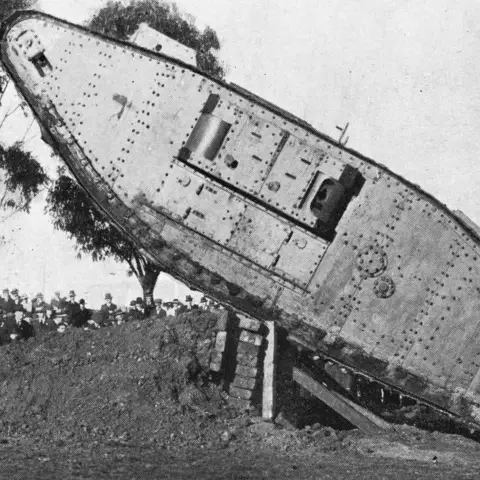
The Mk IV tank struts its stuff at Adelaide’s Unley Oval.
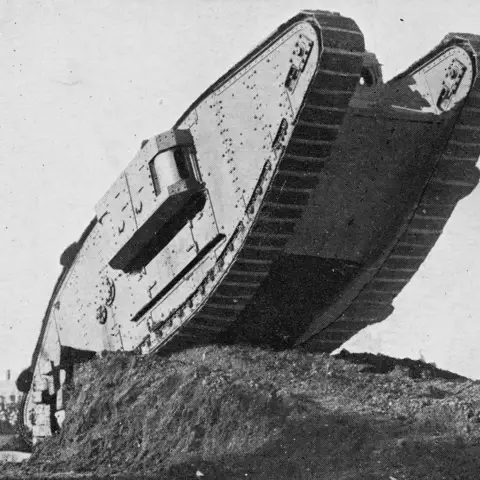
The Mk IV tank struts its stuff at Adelaide’s Unley Oval.
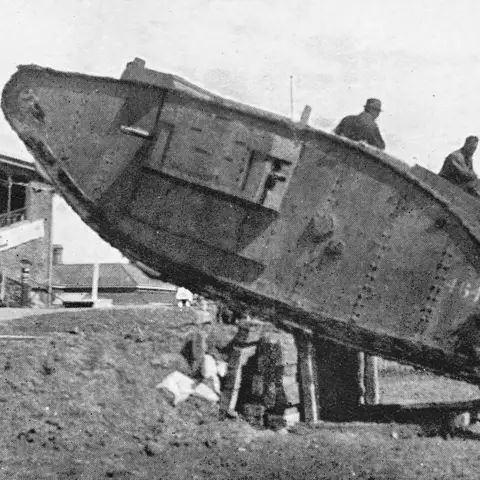
The Mk IV tank struts its stuff at Adelaide’s Unley Oval.
The tank left South Australia with a new name – Grit – formally bestowed upon it by Lady Galway. It returned to Melbourne, and this time was used in a proper manner at the Royal Show. It broke down a fence to enter the arena for its show, and was driven through water, mud, and a brushwood fence before lurching over a great pile of bricks and wooden logs. It went on to be shown in Sydney, Brisbane, and Albury, until it was finally retired to the collection of the Australian War Memorial.
Everywhere it went, the tank delighted audiences who had never seen anything like it. Descriptions by the press gave Grit its own personality. One journalist from Sydney wrote that when it encountered an obstacle it hunched itself round “until it faces the barrier fairly, then it pauses, takes a contemptuous look at the trench or wall ahead, and simply butts into it.” The tank, he said, “then paused, as if ruminating over the vanity of all things except tanks, hitches itself around, and sets solemnly and unemotionally after the next obstacle in its track.” After reading about and imagining tanks for years, the Australian public were not disappointed to see their own in action.

The Mk IV Female tank, known as 'GRIT', being delivered to the Australian War Memorial.
Mephisto
A year later another tank arrived in Australia – a German one captured by the 26th Battalion near Monument Wood in 1918. It arrived in Brisbane by liner in June 1919, and had to wait until a special crane could be secured and erected on the wharf to unload it. This tank was about the same weight as the Mk IV, but was much less maneuverable. Once on the wharf, it took two of the Brisbane Council’s steamrollers from midnight until 11 am to drag it to the museum grounds, a distance of about two miles. The tank’s caterpillar tracks left dents in the road, and a few small accidents occurred while trying to turn it around corners. It was put in the grounds of the Queensland Museum.
This tank came with its name painted on it, with a drawing of a devil clutching a British tank under its arm. The Queensland soldiers who recovered it added their own art, writing their names and messages all over it. Because it was left in the grounds of the museum for a number of years before a covering was put over it, the signatures and messages deteriorated, and the tank suffered from weather damage. One lady, hearing that the writing was rubbing off, went to photograph the name of her son, who had died in battle after writing on the tank. After some wrangling as to the cost of building the tank a shelter, one was finally erected in 1920.
Mephisto was never celebrated in the way the Mk IV tank was, and as it was damaged and out of order when it was recovered, it was never repaired and put through its paces for the public. Nevertheless, it was one of only 20 of its type ever built, and it is the only one that still exists today. It underwent restoration work following further damage sustained during the 2011 Brisbane floods, and was displayed at the Australian War Memorial from July 2015 to May 2017.
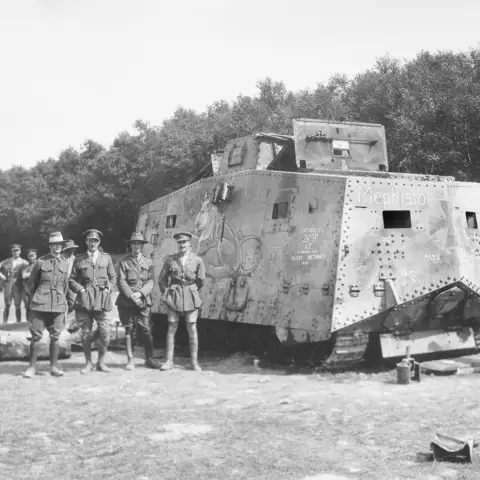
Australian soldiers inspect Mephisto, a German A7V tank, France 1918.
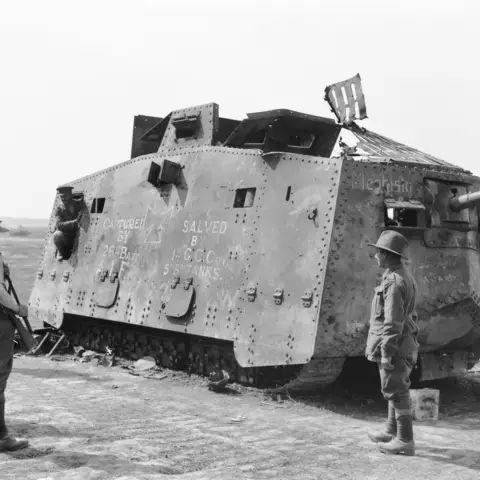
Australian soldiers inspect Mephisto, a German A7V tank, France 1918.
Encounter with a Mark IV Tank
A German war correspondent described his first encounter with a tank:
“My blood froze in my veins. Crawling along the cratered battlefield were two mysterious monsters. The monsters approached slowly – limping, staggering, swaying – but no obstacle could stop them. They moved ever forward with a supernatural force. Our machine-gun fire and hand grenades simply bounced off them.”
